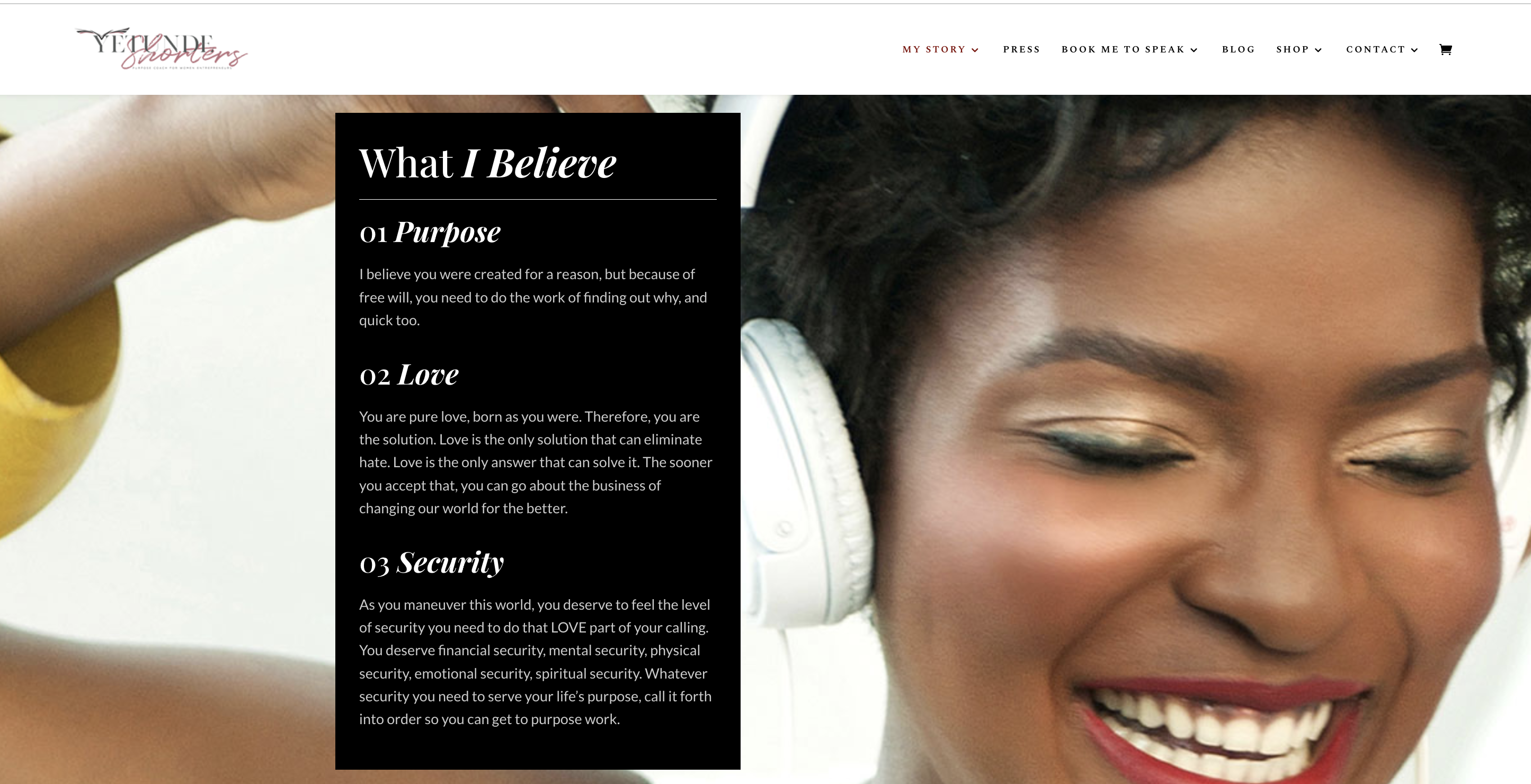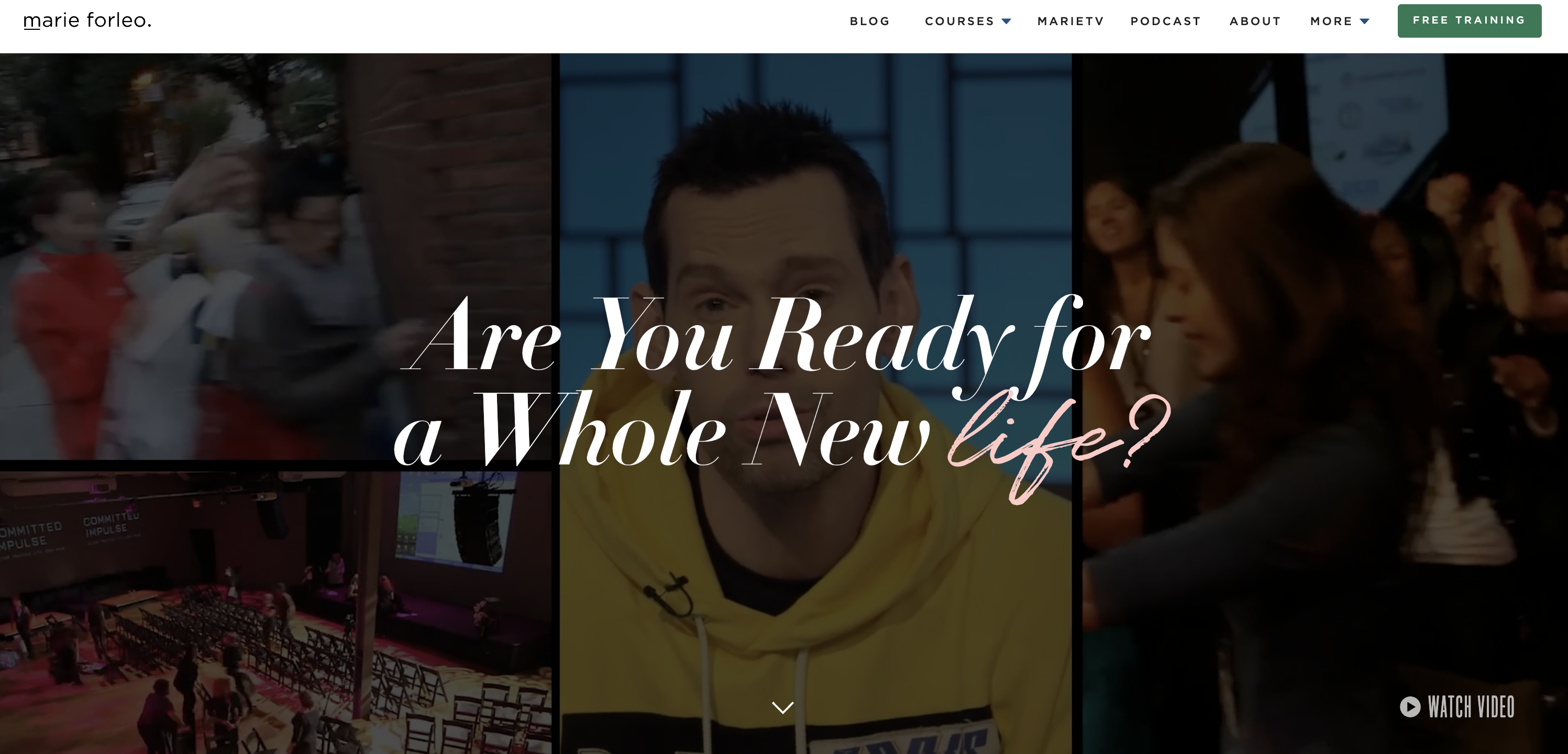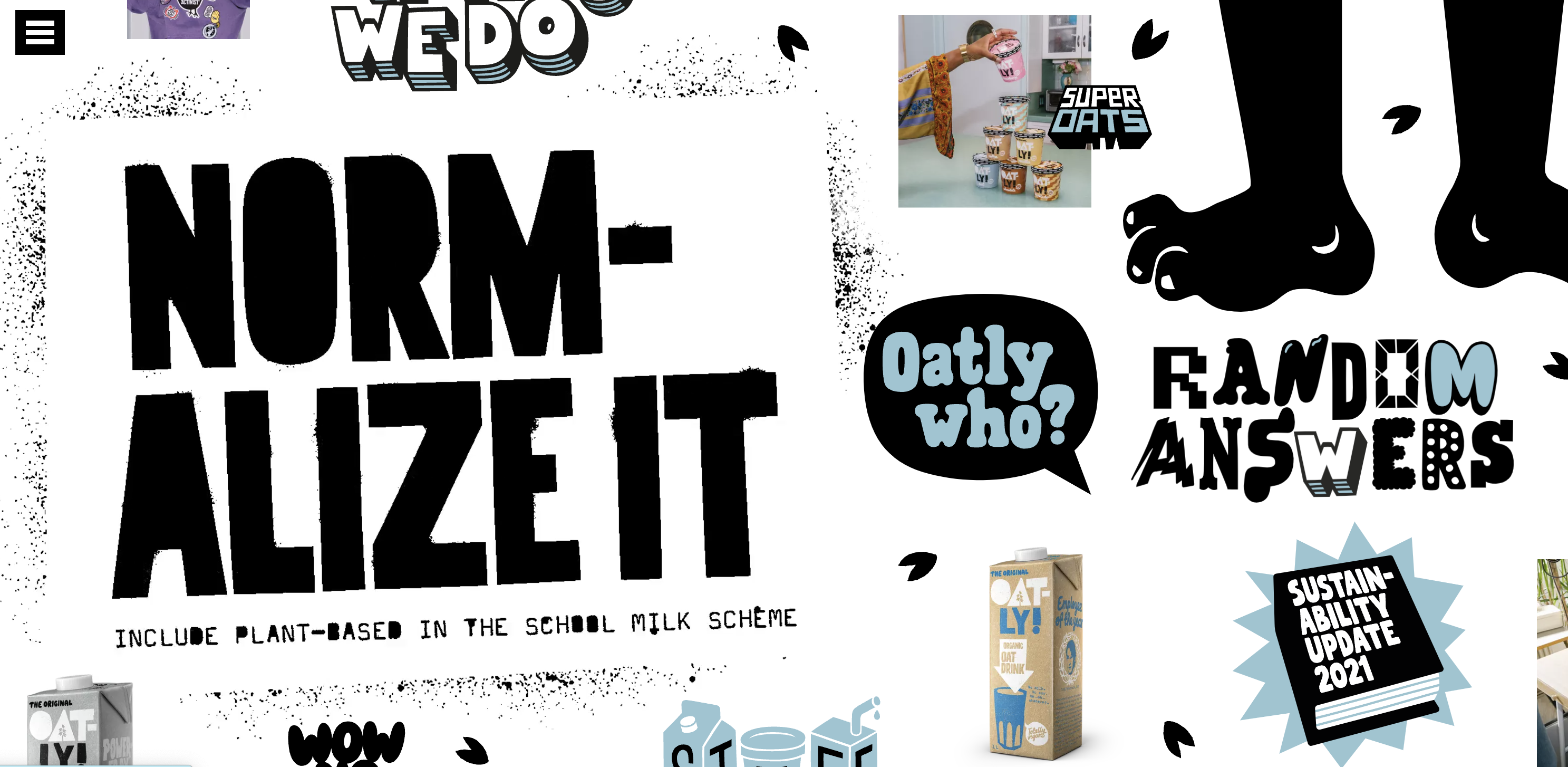In the day-to-day process of running a business, it can be easy to miss the bigger picture — why is it that you’re actually doing what you do?
Because in order to be successful, you need to have a clear purpose for your brand. It’s your motivation for setting up your business, how you’re going to help your customers, and helps you decide what your core goals should be. And while so many creators think they know what the purpose of their brand is, many of them have never actually taken the time to put it into words.
That’s where Yetunde Shorters comes into the mix. Yetunde is an international publicist, entrepreneur, founder of the ICY Academy, and an absolute expert in helping brands define their purpose. As a guest speaker at the Think In Color 2021 conference, she shared her tips on how to use your brand purpose to level up your business and boost your income.

Keep reading to get her expert tips, or jump ahead to get inspired by some of the top brand purpose examples…
- What is a brand purpose?
- How to find your brand purpose
- 3 tips to help you define your brand purpose
- 3 examples of purpose-led brands
What is a brand purpose?
Your brand purpose can be defined as the reason your brand exists. It’s why you started your brand and the thing that inspires you most.
[Your brand purpose is] something joyful, something that you are excited about… Something transformative. It will literally change your life and the life of others.Yetunde Shorters, Founder, icy academy
Brand purpose may sound like a modern marketing concept but the idea is something deeply emotional and personal. Everyone who starts a business has a ‘why’ — their reason for establishing it — and this is the core motivator at the heart of everything you do.
Through the course of building your brand, you will probably have times where you stray away from your brand purpose. But remembering your brand purpose will help you come back to your foundation. It’s a great way to connect back to your original aims and remind yourself why you’re doing what you do (and who you’re doing it for).
Because there’s an emotional element within your brand purpose — and telling this story can help you create a deeper connection with your audience.
Benefits of a brand purpose

According to Yetunde, knowing your brand purpose can have big benefits for your business, allowing you to:
- Improve engagement
- Differentiate from your competitors
- Boost brand loyalty
The relationship you have with your customers will determine the longevity of your brand, and leaning into your purpose is a key way to foster that relationship.
Related: What Is A Brand Story? And Why You Need One (+Tips & Examples)
How to find your brand purpose
If you’re not sure what your brand purpose is, Yetunde has a really simple step-by-step process to help you find it. Here are three questions she asks to help brands find their purpose…
1. Why are you doing this?
At its heart, your brand purpose can be defined simply by answering one question: ‘Why are you doing this?’ The answer should encompass the reason you started your brand, and the one benefit you are hoping your brand can provide to the world.
Keep it simple and write it down in one sentence.
Your brand purpose might be as basic as wanting to make people to be happier, or wanting people to feel more financially secure. Whatever it is, write down the answer that feels personal to you.
For example, here’s the answer Yetunde came up with for her own brand: “To inspire and encourage and cheer others on to be a better version of themselves.”
2. Who does this purpose serve?
Next you need to figure out who specifically will benefit from your brand purpose the most. This is the part where you write down who your target audience is.
Who will get the most value from the services you have to offer? Who do you most want to help? Be as specific as possible here.
Many entrepreneurs start their business wanting to help everybody. While that’s a nice place to begin, the more you can niche down, the easier and faster you can approach people who really need your services and who will get the most value from them.
As you build your brand over time, you can add more audiences and expand your niche but for now — be clear on who you’re targeting. Focus on your core customer base.
3. What can your brand purpose do for your audience?
To fully understand your brand purpose, try to write down the top three emotions that are most valuable to your ideal customers, based on the purpose of your business.
In this step, you’re aiming to connect with the emotional benefits of your business and what you can deliver for the people you help.
To take an example, The Financial Diet aims to provide their audience of smart, ambitious women with resources and products that will “help them achieve their goals, feel their best, and build the lives they want on any budget.”
Those are three powerful emotions that they put at the heart of everything they do.
Related: Discover Your Purpose with Marshawn Evans Daniels
Defining your brand purpose
When you’ve answered these three questions, you can put it all together into one statement. This will be your brand purpose.
Here’s how Yetunde defines her brand purpose:
My name is Yetunde Shorters and I help women entrepreneurs discover their purpose in five easy steps so that they live through that purpose, impact lives and earn money confidently without feeling overwhelmed or giving up who they really are. I do this by using PR and creative brand new strategies that get them results.
For Yetunde, it’s not enough to just call herself a publicist or a coach. Her brand purpose statement lets her introduce her services in a way that shares how she serves other people, not just her job title.
Write down your brand purpose and then try saying it out loud. Get comfortable with it. This is your mission statement, your elevator pitch and your core philosophy. (Don’t worry if it’s not perfect, either — you can always come back to it and refine later.)

3 tips to help define your brand purpose
Creating a brand purpose can be a very personal (and even emotional) journey. If you’re having a go at this for the first time, here are three top tips from Yetunde to keep in mind.
1. Don’t get caught in comparisons
A common pitfall when you’re defining your brand purpose is to get caught by the comparison monster. That’s when you start comparing yourself to other people who are already doing what you want to do, or those who are new to the market.
Tip from Yetunde: “Keep in mind that there are over 10,000 species of birds in the world. 10,000 species! Many of those birds are going to overlap and have similarities, but they’re all thriving.”
Remember that you are unique, so your personal brand will be unique. There is room for everyone. You don’t want to get stuck always comparing yourself to others.
2. Be specific about who you serve
There’s never going to be a time when you don’t come up against competitors, and that’s where tip number two comes in. To be successful — you need to find your niche.
Create detailed demographics for your target audience and gather as much data on them as possible. Then think about what kind of relationship you want with those people, or, even better, that one person: your ideal customer.
To truly lean into your brand purpose, you need to know everything about them, like where they hang out, what their core interests are, and what keeps them up at night.
Tip from Yetunde: “Be so detailed that they think that they’ve been in a relationship with you for longer than they have been.”
The more you can get specific and learn about your target audience, the stronger a relationship you can build. With a clear audience in mind, you can target your products, your marketing, and your messaging to those specific people and turn them into loyal followers.
3. Practice patience
The social media age has trained us to want everything done immediately. We want instant results, instant answers, and instant customers.
But building a business is rarely instant. You need to leave time to build up your reputation and gain your audience’s trust.
Tip from Yetunde: “When you plant a seed, you need to water it, it needs the sun. You need to nurture it. Even some insects may come by and have a bite. But you have to give it time so that it can grow.”
When it comes to your brand purpose and building your brand reputation, you need to take daily action to help your business grow. Spend time nurturing it and don’t hurry the process.
How to use your brand purpose in your content
One of the top benefits of knowing your brand purpose is using it to shape your content and how you communicate with your customers. Here are four ways you can use your brand purpose in your content to attract, engage and convert your ideal customers.
1. Position yourself as a ‘thought leader’
Set yourself apart from your competition by positioning yourself as a thought leader in your industry with a unique stance on key points and issues. In every piece of content you produce, keep this position at the front of your mind.
Understanding what you fundamentally disagree with in your industry helps to clearly state your position on it. It’s like drawing a line in the sand.
Yetunde Shorters, Founder, icy academy
Drawing this sort of boundary helps to make you a memorable and engaging voice for your brand. It establishes you as an expert with a clear purpose.
To find your unique stance, try asking yourself:
- What do I want to change in my industry?
- What are other brands doing that I want to do differently?
- What new perspective can I offer based on my background, expertise and passions?
Use your answers and brand purpose as a springboard to establish yourself as a thought leader in the space.
2. Create an ‘identity connection’
To reach your customers, you also have to connect with them personally and professionally.
A lot of purchasing decisions we make are based on emotional grounds. If a customer is choosing between two similar products or services, they will pick the one they feel more emotionally connected to most of the time.
Your brand purpose can help you to build that emotional connection by creating a sense of shared identity with your audience.
You have to connect to your customer as whatever they identify with, [whether that’s] as a mother, a father, an entrepreneur, or a cancer survivor. Once you start tapping into the feelings of your ideal clients, they will be emotionally engaged.
Yetunde Shorters, Founder, icy academy
Whatever identity your ideal customer has, try to generate content that speaks directly to them. When you can show that you have shared identities, titles, backgrounds and emotions, you have a chance to create a more intimate connection with your audience.
And with a clear brand purpose? You can strengthen brand loyalty and create more brand advocates from your customers.
3. Share the ‘what’
To hook people with your content, you need to show them more than just a dream. You need to show them the ‘what.’
The ‘what’ is just telling me, literally, what do I need to do? If I want to launch an online webinar, what do I need to do? If I want to launch an online course, what are the things I need to do?
Yetunde Shorters, Founder, icy academy
Rather than just highlighting the final destination, outline the steps of the journey. Give people clear, step-by-step, structured information on how you will help them achieve their goals. Think tutorials, how-to guides, workbooks, and more.
This is how you hook your audience and give them an insight into your expertise and the benefits of your products and services.
4. Provide ‘quick win’ content.
A really great way to seal the connection with your customers and express your brand purpose is to give potential customers a ‘quick win’ idea that will help them right then and there. You can demonstrate your brand purpose and your expertise on an immediate level by demonstrating to potential customers how you can help them change their lives in a small way.
The keyword here is quick win. You have to share something that gives them immediate results.
Yetunde Shorters, Founder, icy academy
Think of this type of content like a teaser for what’s to come if they buy into your brand. It could be a worksheet, a spreadsheet, a script, or a step-by-step method — just make sure it helps your target audience instantly.
For example, say you’ve created a course that aims to improve the self-confidence of new moms. For a ‘quick win’ content piece, you could walk your audience through a short exercise that helps them immediately (such as writing three positive affirmations or identifying three things they’re proud of each week).
At the end of this exercise, your target customer will have a taste of how you can uniquely help them — and they’ll hopefully feel more positive and more confident from just that one short exercise.
Top tip: Add a “call to action” (CTA) to every piece of ‘quick win’ content you produce. This way, you can encourage visitors to sign up for your paid services or products next.
3 examples of purpose-led brands
Looking for inspiration to help you define your brand purpose? Check out these three examples of purpose-led brands. Each of them have made a splash within their respective spaces by having a strong purpose defined right from the get-go.
1. Marie Forleo

As a life coach, entrepreneur, and educator, Marie Forleo has built a strong brand purpose that lets her instantly connect with her audience. Marie is committed to supporting multi-passionate business owners to help them live a life they love, while using their businesses in service to the world.
The front page of Marie’s website asks: “Are you ready for a whole new life?” and her messaging is all targeted towards individuals looking for this type of transformation.
Marie has successfully positioned herself as a thought leader using her clear brand purpose. She’s the author of a New York Times best-selling book ‘Everything is Figureoutable’ and she has been a guest and speaker for Oprah, Richard Branson, the Today Show and more.
2. Oatly

Swedish dairy alternative brand Oatly is proud of its brand purpose — to get more people to ‘ditch milk’ and shift consumption to plant products instead. Their website, packaging, and brand communications all illustrate their strong opinions and overall purpose in a lighthearted but unambiguous way.
Their brand purpose is written into their website as a mission statement:
Our goal is to always deliver products that have maximum nutritional value and minimal environmental impact. We promise that our drive to help people enhance their lives and contribute to the long-term future of the planet will always come before the reckless pursuit of profit. We strive to produce the most sustainable, responsible products on the market and are continually looking for ways to make our products even better.
Thanks to their clear brand purpose, Oatly have won the affections of environmentally-minded consumers across the world. As they say themselves: “Most companies think that having a strong opinion means scaring away customers who think differently. We think it’s a good way to make some new friends.”
3. Calm

Calm is an app specializing in sleep, meditation, and relaxation. They also have a very clear brand purpose: “To make the world happier and healthier.” They live up to this purpose by offering a wide range of wellness resources, from guided meditations to relaxing music tracks and even children’s books.
To provide ‘quick wins’ for their customers, Calm offers free content that provides instant benefits to users, helping them to feel calmer and happier. On the Calm website, the first question they ask is: ‘what can we help with today?’ with options including ‘improve sleep quality’ and ‘reduce stress or anxiety’. From the outset, Calm communicates its brand purpose of improving wellbeing for everyone.
Define your brand purpose to build your brand and your audience
Right now, you might not consider yourself a content leader or an expert — but if you can define your brand purpose, you can give yourself clear direction for how to get there.
Every time you step in front of a camera or a computer, you can be confident in your purpose and your status as an expert. No one else can build your brand and deliver your content the same way you do. Use your brand purpose to remind yourself (and your customers) of what makes you special and why you’re committed to what you do.
If you’re still unsure on your brand purpose, try our free brand strategy template below!







